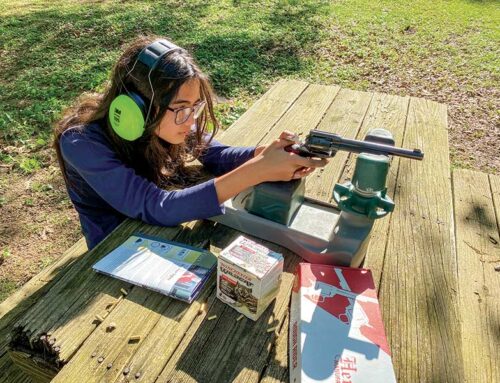
If you interpret “home defense” in the broadest sense, the objective is to protect your people and your home from threats of any kind. That would include not just home invasions but also simple burglary and even fire. While the concepts overlap a bit, we’re going to focus on the intruder scenario here. When thinking about a home-defense plan to deal with a possible break-in, don’t forget to consider your strategy for more likely “home safety” events like fire. Many of the same planning principles apply.
Make Your Home Uninteresting
Like most people, criminals will choose the path of least resistance. When deciding whether to mug an alert 220-pound man obviously keen to his surroundings or another who has a fat wallet in the back pocket and his face buried in a smartphone, guess who will get bypassed in the victim-selection process? It’s the same with homes. If your house has motion-activated lights, low shrubbery, a solid door and a Ring-style video doorbell or motion camera on all doors, your home will be lower on the ideal target list.
Your Safe Space
Defending your family from a band of night-vision-wearing commandos is only a realistic scenario in the movies. Keep your planning practical based on real scenarios and crime statistics. If your strategy is to go forth and play Ninja hide-and-seek with home invaders, you’ve just improved their odds. Sure, you know the floor plan, but you’re moving into an unknown situation just like they are.
I’m using the term “safe space” in the pure and literal sense here. If someone breaks into your home, the odds favor a strategy of barricading in a defensible area that’s as safe as possible while you call for reinforcements. If you have to resort to kinetic action, your chances of success are better when YOU decide the circumstances.
Consider the places in your home that are most defensible. Do you have areas in your master bedroom that provide both concealment and cover? If you’re in a place that’s hidden and has a “tactical” advantage over someone coming in, why wouldn’t you want to make them play by your rules? When an army invades the fortified position of another, the old-school rule of thumb is that the attacking force should outnumber the defenders 3:1, if all else is equal. There’s a reason for that: The defenders have the benefit of “digging in” and hiding while waiting for attackers to show themselves. Why wouldn’t you “cheat” in a similar fashion to improve your odds of success?
Source: The 6 Essential Parts of a Home-Defense Plan | USCCA








Leave A Comment